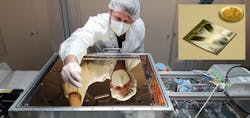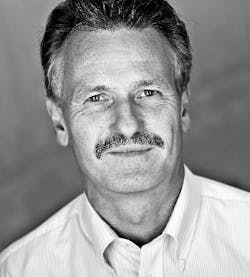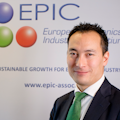Carlos Lee: What’s the background to your appointment as professor at the Institute of Physics and Astronomy at the University of Potsdam?
Martin Roth: In 1994, after earning a Ph.D. in astrophysics from Ludwig Maximilian University of Munich, I joined the Astrophysical Institute Potsdam (AIP), which, following German reunification, was given the task of developing instrumentation. I had an interest in the field—having built a photopolarimeter for my Diploma, and a CCD camera system as part of my Ph.D.—so I was invited to create a new group to build astronomical instruments.
The AIP goes back to Leibniz and the foundation of the Berlin observatory in 1700. After moving to different locations in Berlin, in 1913, it finally ended up on the Babelsberg campus in Potsdam. In that year, the director of the Babelsberg Observatory, Paul Guthnick, developed the first photonics application in astronomy by attaching the first single-pixel detector to a telescope to enable the measurement of the brightness of stars with unprecedented accuracy. Since then, the institute has been involved in many areas of research—building instruments for astronomical telescopes on the ground and in space, including a contribution to the James Webb Space Telescope. Other noteworthy areas include the study of magnetism, stars, and exoplanets on the one hand, and large-scale structure of the universe, cosmology, and extragalactic astrophysics on the other.My first project at the AIP was the development of the Potsdam Multi-Aperture Spectrophotometer (PMAS), covering the wavelength regime between 350 and 900 nm. Since 2001, this instrument has been in regular operation at the Calar Alto 3.5m telescope, where it is one of the most-used instruments by the community. This was our first entry into international business, which led me to coordinate the European research training network Euro3D and, then in 2008, to co-found innoFSPEC Potsdam, an interdisciplinary center dedicated to the development of astrophotonic technologies. We focused first on the application of optical fibers for astronomy and physical chemistry, but then in the second phase of funding we expanded into waveguides and photonics in general—with the goal of making applications more viable by increasing efficiency and reducing costs of instrumentation for telescopes we’re operating on the ground and in space. Interestingly, the Decadal Survey Astro2020 (U.S.), published in November 2021, considers our route to the development of astrophotonics as a role model for the future.
In 2010, I almost accepted the position of head of instrumentation at the European Southern Observatory, but turned it down in favor of a professorship in astrophotonics and astronomical instrumentation at the University of Potsdam. We currently have a team of about 20 people, and 10 on the Babelsberg campus.
CL: What has been your greatest contribution during the last 30 years?
MR: Using adaptive-optics-assisted integral field spectroscopy, we’ve been able to resolve stellar populations in nearby galaxies. The most spectacular recent result concerns the massive, young stellar cluster, R136, in the 30 Doradus Nebula, a turbulent star-birth region in the Large Magellanic Cloud (LMC), a satellite galaxy of our Milky Way. Many of the stars are among the most massive known and without integral field spectroscopy, a spectroscopic analysis of such stars is impossible.
CL: What were your guiding principles throughout your career?
MR: A multidisciplinary approach: innoFSPEC Potsdam was set up on the principle that a combination of two disciplines, i.e., photonics and physical chemistry, has greater potential to produce innovations than more one-dimensional research. An example of the success of this approach is the use of integral field spectroscopy from astrophysics for imaging Raman spectroscopy of organic and inorganic samples, which is attracting international interest especially for new devices in cancer diagnostics. Photon density wave (PDW) spectroscopy has also been successfully developed as an innovative method for optical process analysis technology (OPAT). The use of optical fibers for spectroscopy is providing us with an imaging capability, but we’re looking forward to novel applications that go beyond fibers, and in the next 50 years, I see photonics as a key enabler for us to accomplish these complex measuring techniques.
Human potential: I’m deeply convinced human potential drives science and technology. During the last 30 years, I’ve had the privilege of having access to very bright students and working with fabulous, very talented people and this has been the most enjoyable part of my job. In this context, I’ve preferred to work collaboratively and avoid being too focused on my own career.
Knowledge transfer is a long-term process: I’ve always been fascinated by the use of technology to solve scientific problems. One of the most difficult scientific problems is to resolve things in space when they are clustered. When I became aware of integral field spectroscopy in 1994, I used it to provide extremely high angular resolution spectroscopy from new instruments on ground-based telescopes, which can be as high as those delivered by the Hubble Space Telescope, or even better. It took 20 years to make it a reality from what was a futuristic vision in the early ‘90s, starting with two people in a very tiny team at the AIP. From this experience, I came to recognize you need to take a long-term approach with innovation. A case in point is the use of imaging spectroscopy for the medical sector, to provide doctors with immediate information about resection margins for cancer surgery. We’ve been working on this type of augmented reality since 2012 with clinical and industrial collaborators, but it will probably be another 10 years before we have something on the market because of the various certification problems coming from clinical studies.
Contact with industry: Building instruments requires good contacts with industry. When I started out in 2003, I was keen to get in touch with companies and learn how they function, something that is outside the normal horizon of a scientist. We are fascinated about research, but we don’t know what reality is in terms of a company surviving by making revenues, etc. Usually, only one attempt in a hundred is successful and you have to be aware it’s only a fraction of the time you spend that will come back in the form of revenues for a company.
Networking: Networking has always been a guiding principle of my work and has led me to join forces with my colleagues. It’s important to get to know people to exchange visions, to learn new things, in particular in informal ways. It’s impossible to read all the literature on a particular topic, and when you work in a transdisciplinary way, networking is crucial.
Sustainability: I care about the sustainability of our center. One of the main problems is funding. We have yearly reviews, but I have always tried to attract permanent funding so we can really become the world leader in astrophotonics. In this connection, we tried to move away from the blue-sky aspect of research and astrophotonics and into real-world applications. In other words: to turn inventions into innovations. We have a few examples of successful applications of photonics in astronomy in Germany, one of which led to the Nobel Prize for physics last year (Reinhard Genzel) for accomplishments regarding the black hole within the galactic center. Not everybody knows that the latest variant of the instrumentation he developed incorporates a photonics component beam combiner with a chip, so integrated photonics is something that is now gaining attention.
CL: What advice do you have for the next generation of entrepreneurs?
MR: First, pick a subject that you find exciting even if it’s not yet mainstream, but with the caveat that your subject has a future in terms of market applications.
Second, even though it may be time-consuming, networking is extremely important.
Third, you need to be aware that innovation takes a long time to become real, so be prepared for frustrating experiences and don’t give up too early.
Finally, it’s crucial to have inspiring collaborators with a good team spirit.
About the Author
Carlos Lee
Carlos Lee is Director General of the European Photonics Industry Consortium (EPIC; Brussels, Belgium), an active industry association that fosters a dynamic photonics ecosystem by maintaining a strong network and acting as a catalyst and facilitator for technological and commercial advancement.


